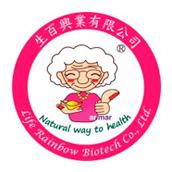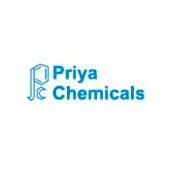The “ideal protein” concept is not ideal in animal nutrition
Published: August 22, 2022
Summary
Introduction Amino acids (AAs) are natural substances containing both amino and acid groups. Proline, which contains an imino group but not an amino group, is loosely considered as an AA in nutrition and metabolism. 1 Protein (the polymer of AAs) is the major component of growth in animals and has been a focus of nutritional research over the past century. 2 Proteinogenic (protein-creating) ...
Related topics:
Authors:
Texas A&M University
Influencers who recommended :
Martina Kluenemann, Ana Gavrӑu and 2 moreRecommend
Comment
Share
Texas A&M University
23 de agosto de 2022
Welcome to discussions on this new paper regarding the “ideal protein” concept in animal nutrition. Thanks for your participation!
Recommend
Reply
11 de septiembre de 2022
Very interesting and I will be attentive to the discussion which should be very enriching.
Recommend
Reply
Indbro Research & Breeding Farms
12 de septiembre de 2022
can some one explain what is ideal protein concept?
Recommend
Reply
Texas A&M University
12 de septiembre de 2022
Dr Kotaiah Talapaneni The :ideal protein" concept is explained in the full article. Please read it. Thanks.
Recommend
Reply
Kronos -Agro private company
16 de septiembre de 2022
Although I agree with the author of the article about the difficulties of practical application of the ideal protein concept, nevertheless, I believe that this concept has the right to exist as a mathematical model. It can be used to get closer to the most efficient protein absorption. But in practice, fluctuations in the composition of grain raw materials and protein sources are observed, and the metabolism of animals and birds also differs both from the type of animals, and from age and various physiological stages. Therefore, the concept of an ideal protein in practice cannot be applied perfectly. As a biochemist, I believe that one should simply strive for the optimal ratio of amino acids. Typically, requirements for amino acids and other substances in the diet are developed by geneticists and breeders and are attached to the technological passport of the bird. This is the most important basic information to follow.
Recommend
Reply
Universidade Federal de Viçosa - UFV
4 de octubre de 2022
I congratulate the authors for the information contained in this article, which I fully agree with. I also understand that the article that was published on ENGORMIX, under the title Digestible lysine levels obtained by two methods of formulation of diets for 22-to-42-day-old broilers, under my guidance, is somehow consistent with the information described here.
Recommend
Reply
Texas A&M University
4 de octubre de 2022
Juarez Donzele Thanks for sharing your nice data and insights with us. I think that the "Ideal Protein" concept was ideal when we knew little about cell- and tissue-specific metabolism of amino acids in animals or the needs of animals. Now we should move beyond the "Ideal Protein" concept so as to optimize amino acid nutrition in animals and to improve their health and well-being.
Recommend
Reply
Kronos -Agro private company
30 de diciembre de 2022
But animals can improve the ratio of amino acids and make this ratio closer to the theoretical model of an ideal protein using biochemical reactions for the synthesis of the desired amino acids, the degradation of unnecessary amino acids, and the transamination of amino acids. This requires specific conditions and cofactors, for example, coenzymes, electron donors and acceptors, necessary trace elements.
Recommend
Reply
Texas A&M University
30 de diciembre de 2022
Dr. Fiodor S. Marchenkov Do you want your animals to produce ammonia and oxidants from so-called “nutritionally essential amino acids (EAAs)” and at the expense of a large amount of dietary energy, so as to provide other insufficient proteinogenic amino acids. Do you want to waste EAAs if you have a choice to avoid it through careful considerations in dietary formulation? Do you know that the body of an animal contains much more so-called “nutritionally nonessential amino acids (NEAAs)” than EAAs? How do you know that your animals can sufficiently synthesize NEAAs to maximize their production performance?
Recommend
Reply
Kronos -Agro private company
6 de enero de 2023
Guoyao WuDear Dr. Wu, Of course, I do not want animals to increase the load on the excretory systems and excrete excessive amounts of nitrogen. Although, as you know, they still excrete it, despite a balanced diet. To verify this, it is enough to inhale air from any pigsty once. What I meant to say is that metabolism is a flexible system that can respond to different situations through gene expression and induced enzymes. A striking example is vegetable methionine, which replaces half of the chemical methionine added to the feed and does not contain methionine itself. Of course, over time, scientists will explain by what chemical reactions the body can get these 50% of the missing methionine.
Recommend
Reply
Texas A&M University
6 de enero de 2023
Dr. Fiodor S. Marchenkov Many of those so-called nutritionally nonessential amino acids (NEAAs) are potent regulators of gene expression and metabolism in animals. Glutamine is a great example. Some NEAAs are the major metabolic fuels for enterocytes of the small intestine in a species-specific manner to support the intestinal integrity and function. There should be not such a thing as vegetable methionine vs animal methionine. Methionine is an amino acid.
Recommend
Reply
Evonik Animal Nutrition
13 de enero de 2023
I should like also to comment from Dr. Marchenkov regarding "vegetable methionine". As Dr. Wu correctly states, methionine is methionine; an amino acid with a clearly defined structure INDEPENDENT of the source. I have seen numerous products claiming to be "Herbal methionine" and these materials are not methionine, and do not contribute methionine. When used in correctly balanced and formulated diets, they invariably result in reduced animal performance. They will only work in diets that contain an excess of methionine ie where supply is significantly higher than the bodies demand for methionine, whether for protein synthesis or other essential functions such as glutathionine production. So please; no more mention of "vegetable / herbal methionine".
Recommend
Reply
Indbro Research & Breeding Farms
13 de enero de 2023
Herbal methionines were introduced when there was a severe shortage of d.l.methioninine. herbal methionine is a powder which has comparatively higher level of methionine compared to other grains and cakes which are known to contain different levels. Some body analyzed the samples of herbal methionine sold in the market and found 3% d.l.methionine with the same test used for measuring the methionine content. When questioned, the herbal methionine suppliers are putting up a different theory. Their version is that herbal methionine works like d.l methionine. The component it contains cannot be measured in the same way as d.l.methionine is measured. But it gives same biological results as d.l.m but the action is not explained in scientific terms. The results out of herbal methionine are far inferior to synthetic d.l.m. many herbal.profucts are coming in to poultry feeding as growth promoters, immunity boosters and anti microbial. Ban on antibiotic feed additives and some times short supplies of synthetic amunoacids are leaving a place for these products. Number of suppliers are springing up and the performance should be tested before large scale application.
Recommend
Reply
15 de enero de 2023
In my opinion, the problem is not with the producers n suppliers, problem is with the regulators, corrupt drug dept personal, govt agencies n research institutions, any product intended to be introduced in the market, needs to b analysed, studied, only if comparitve results obtained, be allowed to be introduced, as it affects the birds/ animal health n well being first n also enters the human food chain n has environmental impact. Regulators not doing their job must be punished along with the company or person introducing sub standard products in the market, our ineffective, inefficient n corrupt judiciary n govt depts be sentisised with the facts n procedures to ensure quality, effectiveness n economy
Recommend
Reply
Opta Alimentos e Insumos
29 de mayo de 2023
Just to put some pepper to the discussion, approximately 60% of the Methionine requirement from modern broilers comes from vegetable sources.
Congratulation on the discussion about nonessential amino acids, that is truly great, and a better understanding of NEAA in the microbiota patterns are welcomed.
Recommend
Reply
Kronos -Agro private company
30 de mayo de 2023
Luis Fernando Vergamini Luna, I absolutely agree. All metabolic pathways need to be in balance. NEAA are an important part of metabolic participants.
Recommend
Reply
1

Would you like to discuss another topic? Create a new post to engage with experts in the community.






.jpg&w=3840&q=75)










.jpg&w=3840&q=75)